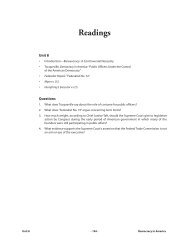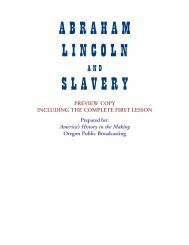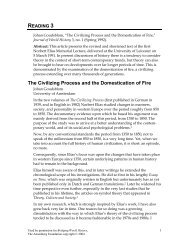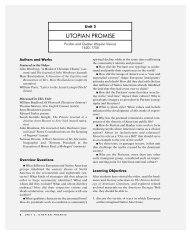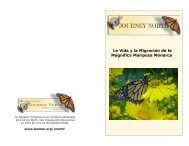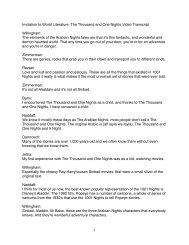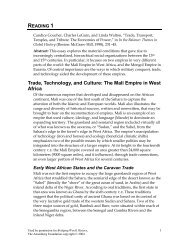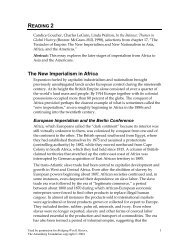You also want an ePaper? Increase the reach of your titles
YUMPU automatically turns print PDFs into web optimized ePapers that Google loves.
16. The BEIC was first known as the English East India Company when it<br />
received its charter in 1600. Its stated intention was to sell English woolen<br />
cloth in Asia and to obtain spices for the home market, but it was unable<br />
to establish markets in China and Japan where the weather might have<br />
helped sell English broadcloth. Its merchants soon learned that Indian<br />
cotton and silk textiles were the long-established commodities of Asian<br />
trade in the “Spice Islands” [contemporary Maluku in eastern Indonesia]<br />
(all paraphrased from Guy 1998, 14). The English East India Company<br />
agents developed their seventeenth-century trade in Indian textiles<br />
within several distinct markets, and the company was known as the<br />
British East India Company after 1707.<br />
17. The Company supplied Indian chintz to London both as fabric lengths<br />
and as stitched clothes (Lemire 1991, 10-13, 15, 180; K N. Chaudhuri 1978,<br />
277). The seventeenth-century craze for Indian handprinted cottons was<br />
associated with both a quantitative increase in the use of fabric for home<br />
decoration, such as “hangings and curtains” (Clabburn 1995, 6), as well as<br />
with new clothing styles. Meanwhile, the BEIC continued to ship<br />
handloomed cotton cloth from India for a profitable re-export trade with<br />
the British colonies in North America and elsewhere. The classic reference<br />
is Irwin and Schwartz 1966.<br />
18. For the arguments that fashion is a western/capitalist phenomenon, see<br />
Fred Davis 1992, 16 note 8, 17, 105; Lipovetsky 1994, 242; Shrimpton 1996.<br />
For the critique of this “colonizer’s model of the world,” see Blaut 1992.<br />
The popular conception of the “unchanging East” had many nineteenthcentury<br />
ramifications. As late as the 1860s, some British manufacturers<br />
were eager to market cloth in India because they apparently believed that<br />
“change in material and style did not exist as such, favourite patterns had<br />
been constant for centuries, [and] fashion did not have to be contended<br />
with” (Lyons 1996, 182).<br />
19. The collection and display of colonial Indian manufactures in Victorianera<br />
exhibitions and museums was an important way in which British<br />
imperialism claimed its authority over information about India<br />
(Breckenridge 1989). The men associated with London’s South<br />
Kensington Museum (later the Victoria and Albert), such as Henry Cole<br />
and George Birdwood, obtained Indian textiles for the collection directly<br />
from the 1851 Exhibition (Barringer and Flynn, eds. 1998).<br />
20. Indian handicrafts were considered to be living antiques in the same<br />
sense that native American handicrafts were in the U.S.; both sets of<br />
“traditions” were supposedly facing extinction through the pressure of<br />
Euro-American commodification (Cohodas 1997).<br />
Used by permission for Bridging World History, 28<br />
The Annenberg Foundation copyright © 2004



